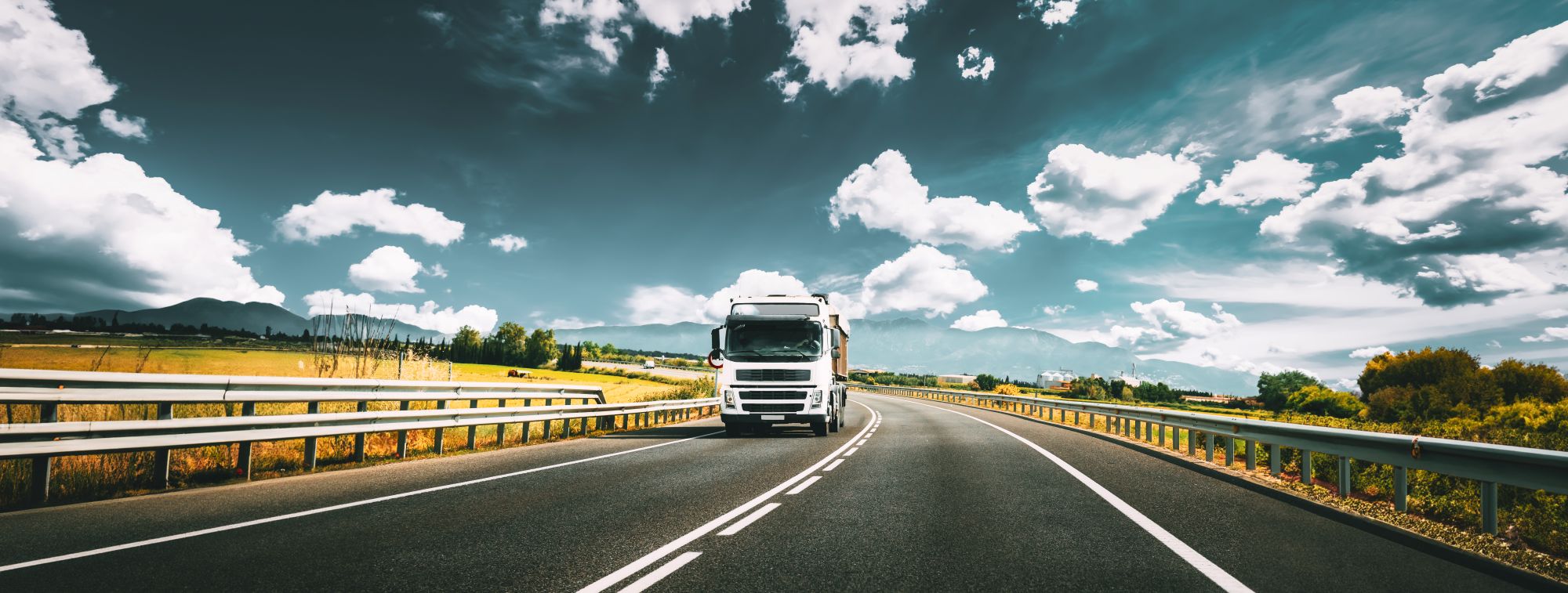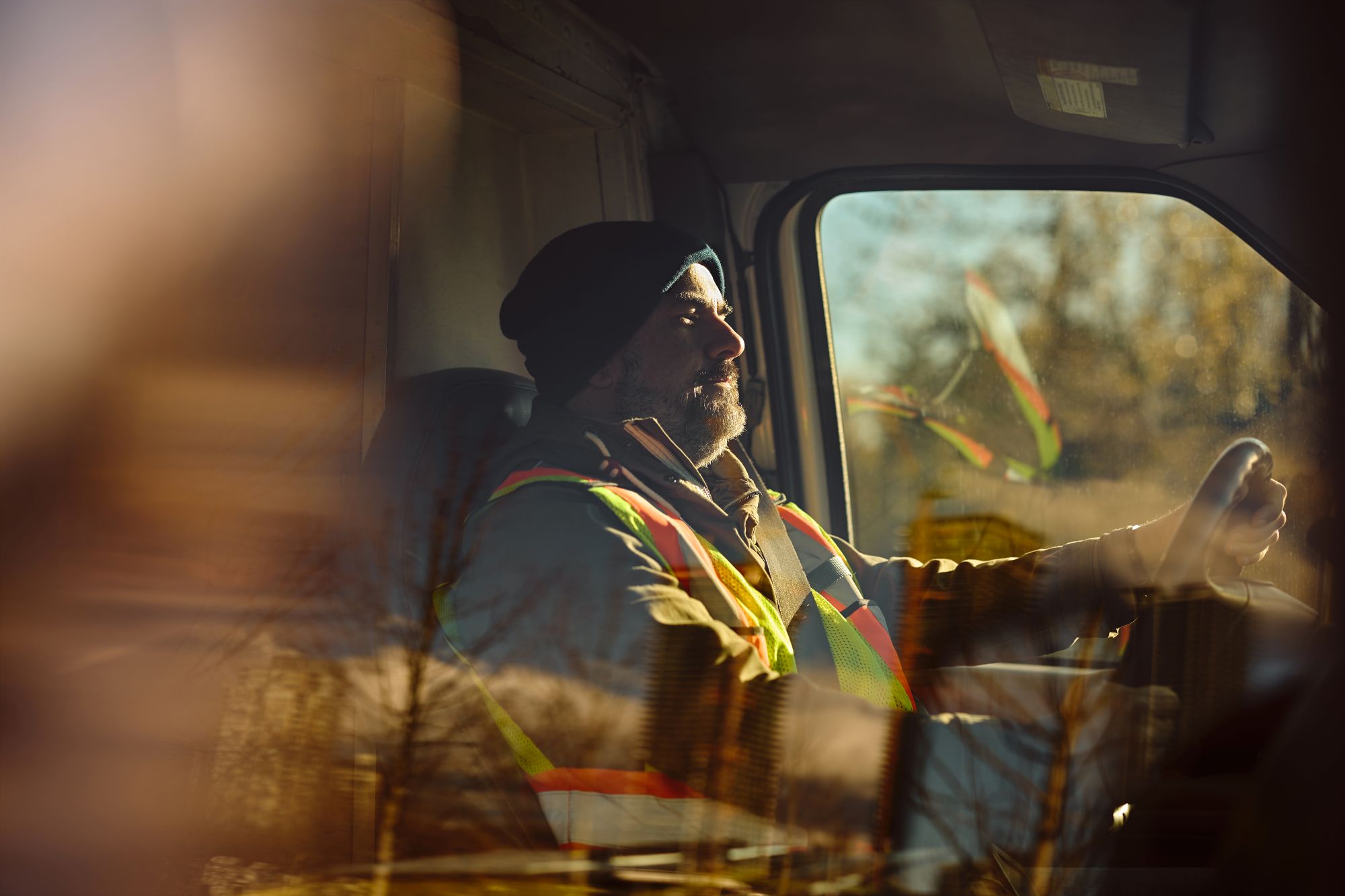
Guest
Rumunijos infrastruktūros suklestėjimas - ką tai reiškia judumo sektoriui
Sukurta: 22-09-2025
•
Atnaujinta: 22-09-2025
Rumunija sparčiai tampa strateginiu logistikos ir krovinių vežimo centru Pietryčių Europoje. Milijardinėmis ES ir nacionalinėmis lėšomis remiamas šalies infrastruktūros atgimimas pritraukia transporto parkų operatorius, investuotojus į logistiką ir gamintojus. Šiame straipsnyje nagrinėjame, ką šie pokyčiai reiškia transporto parkams, vairuotojams ir visam transporto sektoriui.
Rumunijos transporto infrastruktūroje įvyko dramatiškas pokytis. Vyriausybė 2026 m. kelių projektams skyrė apie 25 mlrd. lėjų (4,27 mlrd. svarų sterlingų), o tai rodo, kad beprecedentis dėmesys skiriamas greitkeliams ir krovinių vežimo koridoriams.
2025 m. viduryje Rumunijoje buvo apie 1 325 km eksploatuojamų greitkelių (1 188 km greitkelių ir 138 km greitkelių), dar 741 km greitkelių buvo statomi, o 669 km - konkurso stadijoje.
Iki 2030 m. Rumunija planuoja padvigubinti greitkelių tinklą, modernizuoti strateginius geležinkelio maršrutus, išplėsti miesto transportą ir sujungti nuo seno izoliuotus regionus. Iššūkis didžiulis, tačiau jo rezultatai gali pakeisti šalies padėtį Europos transporto žemėlapyje.
Svarbiausi projektai - iki 2026 m. turi būti baigta statyti šiaurės-pietų ašis A7 nuo Ploješčio iki Sireto, kuri padės susisiekti su Ukrainos siena. Kitas projektas - 11 km ilgio greitkelis, sujungsiantis Satu Marę su Rumunijos siena su Vengrija. A0 Bukarešto aplinkkelis palengvins krovinių ir keleivių eismą aplink sostinę, kurio pietinė dalis jau naudojama. Kiti svarbūs darbai - Suceava-Oar ir Timišoara-Moravița koridoriai, taip pat 2,9 km ilgio Meseș tunelis, kuris taps ilgiausiu kelių tuneliu Rumunijoje.
"Šie koridoriai ne tik pagerins susisiekimą rytų-vakarų ir šiaurės-pietų kryptimis, bet ir sujungs anksčiau izoliuotus regionus, pavyzdžiui, Moldovą ir šiaurės rytus, su likusia šalies dalimi ir ES", - komentuoja SNAP verslo plėtros vadovas Eduardas Ularu.
Tačiau infrastruktūra - tai ne tik keliai. 2023 m. liepos mėn. atidarytas Brăilos tiltas per Dunojų, kainavęs 500 mln. eurų (iš jų 363 mln. eurų - ES bendras finansavimas), yra pirmoji perėja per jūrinį Dunojų ir labai pagerina susisiekimą su Konstancos ir Dobrujos miestu.
Kiti svarbūs pokyčiai - planuojamas Konstancos uosto geležinkelio modernizavimas ir "DP World Romania" 130 mln. eurų vertės konteinerių ir ro-ro pajėgumų išplėtimas, padvigubinantis krovos pajėgumus ir papildantis logistikos jungtis keliais ir geležinkeliais.
Kodėl tai svarbu
Rumunijos krovinių vežimo ir logistikos rinka yra didelė. [Jos vertė 2025 m. bus apie 21,11 mlrd. JAV dolerių (https://www.mordorintelligence.com/industry-reports/romania-freight-and-logistics-market), o 2030 m. prognozuojama, kad ji išaugs iki 24,27 mlrd. dolerių. Tuo tarpu vien krovinių vežimo keliais segmente 2025 m. prognozuojama 9,07 mlrd. JAV dolerių, o iki 2030 m. - 10,37 mlrd. dolerių.
Šie skaičiai atspindi didėjantį Rumunijos, kaip transeuropinio koridoriaus, vaidmenį aptarnaujant maršrutus iš Vengrijos, Bulgarijos, Ukrainos, Moldovos ir Juodosios jūros uostų. Ukraina dabar didžiąją dalį savo grūdų eksporto nukreipia per Konstancą Juodosios jūros pakrantėje ir siekia, kad Rumunijos infrastruktūra padvigubėtų nuo 2 mln. iki 4 mln. tonų per mėnesį.
"Šios investicijos padės Rumunijai stipriau konkuruoti su tokiais svarbiais logistikos centrais kaip Lenkija ir Graikija", - komentuoja Eduardas Ularu. "Konstanca turi didžiulį potencialą, o sukūrus tinkamą infrastruktūrą ji pagaliau gali tapti Europos prekybos vartais, kuriais ir turėjo tapti."
Geresnis sandėliavimas, mažesnės darbo jėgos sąnaudos ir "friend-shoring" tendencijos dar labiau skatina gamintojus ir mažmenininkus steigti logistikos centrus Rumunijoje, todėl didėja kelių paklausa ir auga visas tinklas.

Skaitmeniniai pokyčiai
Infrastruktūra atnaujinama ne tik fiziškai, bet ir skaitmeniniu būdu. Šalis plečia greitkelius ir krovinių vežimo koridorius, diegia išmaniąsias sistemas, skirtas greitesnėms, saugesnėms ir efektyvesnėms kelionėms.
Visame tinkle diegiamos pažangiosios eismo stebėsenos priemonės, įskaitant judesio jutiklius, indukcines eismo kilpas ir pakelės kameras. Šios sistemos realiuoju laiku bus perduodamos į eismo valdymo centrus Bukarešto, Brašovo ir Timišoaros miestuose, padedant valdžios institucijoms ir automobilių parko operatoriams greičiau reaguoti į incidentus ir spūstis.
Bukarešte taip pat atnaujinama šviesoforų infrastruktūra, naudojant dirbtinį intelektą ir išmaniuosius detektorius, kad būtų optimizuoti transporto priemonių srautai ir sumažintos spūstys. Tai turi didelę reikšmę krovinių vežėjams, judantiems tankiai apgyvendintose miesto teritorijose, gerinant kelionės laiko patikimumą ir mažinant tuščiąją eismą.
Nacionaliniu lygmeniu Rumunija pereina prie skaitmeninio kelių apmokestinimo. Planuojama, kad naujoji TollRO sistema, kurią planuojama pradėti naudoti 2026 m., pakeis dabartinę e. vinjetę, o pagal ES direktyvas bus įdiegtas atstumu pagrįstas, į išmetamųjų teršalų kiekį orientuotas rinkliavos modelis. Šis pakeitimas galėtų paskatinti ekologiškesnius transporto priemonių parkus ir pasiūlyti teisingesnę kainodarą logistikos operatoriams, kurie investuoja į mažataršes transporto priemones.
Vairuotojams tai reiškia mažiau vėlavimų, aiškesnę informaciją realiuoju laiku ir operatyvesnį reagavimą į kelio sąlygas. Operatoriams tai galimybė ateityje patobulinti transporto priemonių parko planavimą, maršrutų valdymą ir tvarumo strategijas.
Poveikis automobilių parkams ir vairuotojams
Rumunijos transporto priemonių parkams ir vairuotojams modernizacija teikia ir naudos, ir kompromisų. Bene svarbiausia, kad dėl jos padidės tinklo efektyvumas. Dėl sklandesnių maršrutų ir greitesnių koridorių investicijos greičiausiai sumažins kelionės laiką ir prastovas. Pavojingus vienos eismo juostos valstybinės reikšmės kelius palaipsniui pakeis saugesni ir greitesni greitkeliai. Tai padidins produktyvumą ir taip pat sumažins vairuotojų laiką, praleidžiamą prie vairo.
Tačiau ne viskas teigiama. Dėl vykstančių darbų tokiuose greitkeliuose, kaip A7 ir A8, gali vėluoti ir keistis maršrutai. Tai taip pat gali reikšti didesnį krovinių kiekį (ypač Konstancoje ir pasienio punktuose), kuris gali apkrauti esamą infrastruktūrą.
"Šiuo metu dėl statybų zonų, pavyzdžiui, DN2 ir dalies A0 Bukarešto aplinkkelio, važiuojama aplinkkeliais ir susidaro kliūčių", - aiškina Ularu. "Sunkvežimiai sugaišta valandų valandas maršrutuose, kuriuose turėtų užtrukti kelias minutes, o tai daro įtaką viskam - nuo degalų biudžeto iki pristatymo patikimumo."
Be to, dėl naujų koridorių, griežtesnių saugos taisyklių ir kintančių kelių naudojimo mokesčių reikia daugiau dėmesio skirti reikalavimų laikymuisi.
Pagalba vairuotojų gerovei pereinamuoju laikotarpiu
Nepaisant infrastruktūros laimėjimų, kai kuriuose krovinių vežimo koridoriuose, ypač netoli pasienio zonų ir didžiųjų transporto mazgų, saugios poilsio stovėjimo aikštelės ir gerovės infrastruktūra tebėra išsklaidyta. Statybų zonose dažnai nėra oficialių stovėjimo aikštelių, todėl vairuotojai yra pažeidžiami ir neturi kur pailsėti.
"Vis dar matome pavojingus sustojimus ir perpildytas stovėjimo aikšteles pagrindiniuose krovinių vežimo maršrutuose", - sako Eduardas. "Šiuolaikiniuose greitkeliuose kas 30-50 kilometrų bus įrengtos specialios aptarnavimo ir poilsio aikštelės su degalinėmis, parduotuvėmis ir maitinimo įstaigomis. Vairuotojams tai reiškia saugesnes stovėjimo vietas su tinkamu apšvietimu, vaizdo stebėjimo kameromis ir saugiomis poilsio zonomis, mažinančiomis vagysčių riziką. Sanitarinės patalpos, tokios kaip dušai ir švarūs tualetai - retenybė valstybinės reikšmės keliuose - pagaliau taps norma."
Šią spragą SNAP šalina interaktyviame automobilių stovėjimo aikštelių žemėlapyje visoje Rumunijoje. SNAP žemėlapyje vairuotojai gali lengvai rasti patikimas ir saugias sunkvežimių stovėjimo aikšteles, iš anksto rezervuoti vietas, jei jos yra, ir planuoti saugesnius maršrutus.
Planuojate kelionę po Rumuniją? Naudokitės SNAP žemėlapiu ir raskite saugias, vairuotojams patogias automobilių stovėjimo aikšteles prie pagrindinių krovinių vežimo maršrutų.
Tvarumo aspektas
Šis infrastruktūros modernizavimo procesas taip pat atlieka svarbų vaidmenį kuriant ekologiškesnę logistiką. Dėl geresnio eismo srauto sumažės išmetamų teršalų kiekis, kurį sukelia transporto priemonės, važiuojančios tuščiąja eiga, ir stabdymas.
Taip pat bus modernizuojami transporto koridoriai, kad būtų remiama besikurianti elektromobilių ir vandenilio degalų papildymo infrastruktūra, mažinanti priklausomybę nuo iškastinio kuro.
Judantis regionas
Rumunijos investicijos į infrastruktūrą žymi esminį pokytį krovinių vežimo ir judumo srityje visoje Pietryčių Europoje. Transporto parkams tai reiškia greitesnius koridorius, didesnius logistikos pajėgumus ir didesnes prekybos apimtis, bet taip pat ir griežtesnę gerovės, atitikties ir atsparumo kontrolę.
Būdama pažangiai mąstanti pramonės lyderė, SNAP pasisako už gerai informuotas operacijas, lankstų maršrutų planavimą ir į vairuotojus orientuotas priemones, kurios padeda užtikrinti saugą ir efektyvumą. Rumunija ne tik modernizuojasi - ji keičia krovinių judėjimo būdą regione.
"Kalbama ne tik apie kelius, bet ir apie atsparumą, tvarumą ir pažangesnę krovinių vežimo ateitį visoje Europoje. Rumunija yra šio pokyčio centre", - teigia Eduardas.



